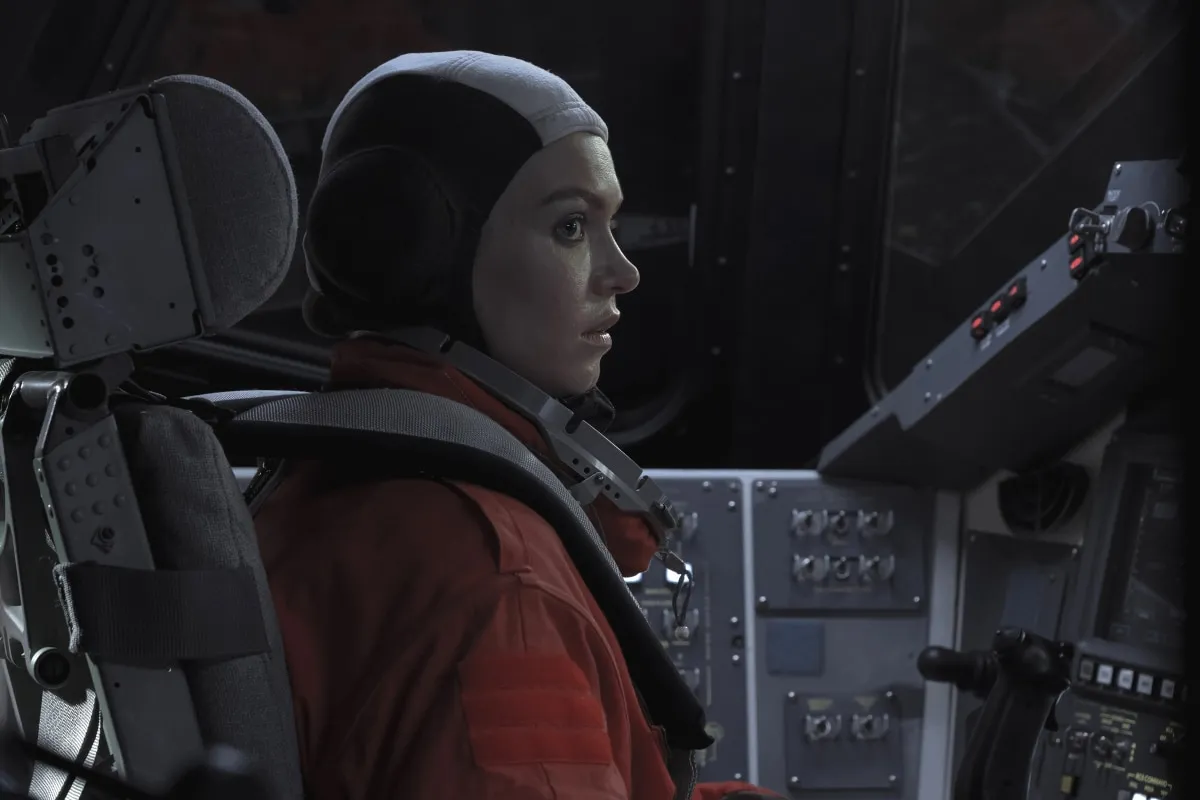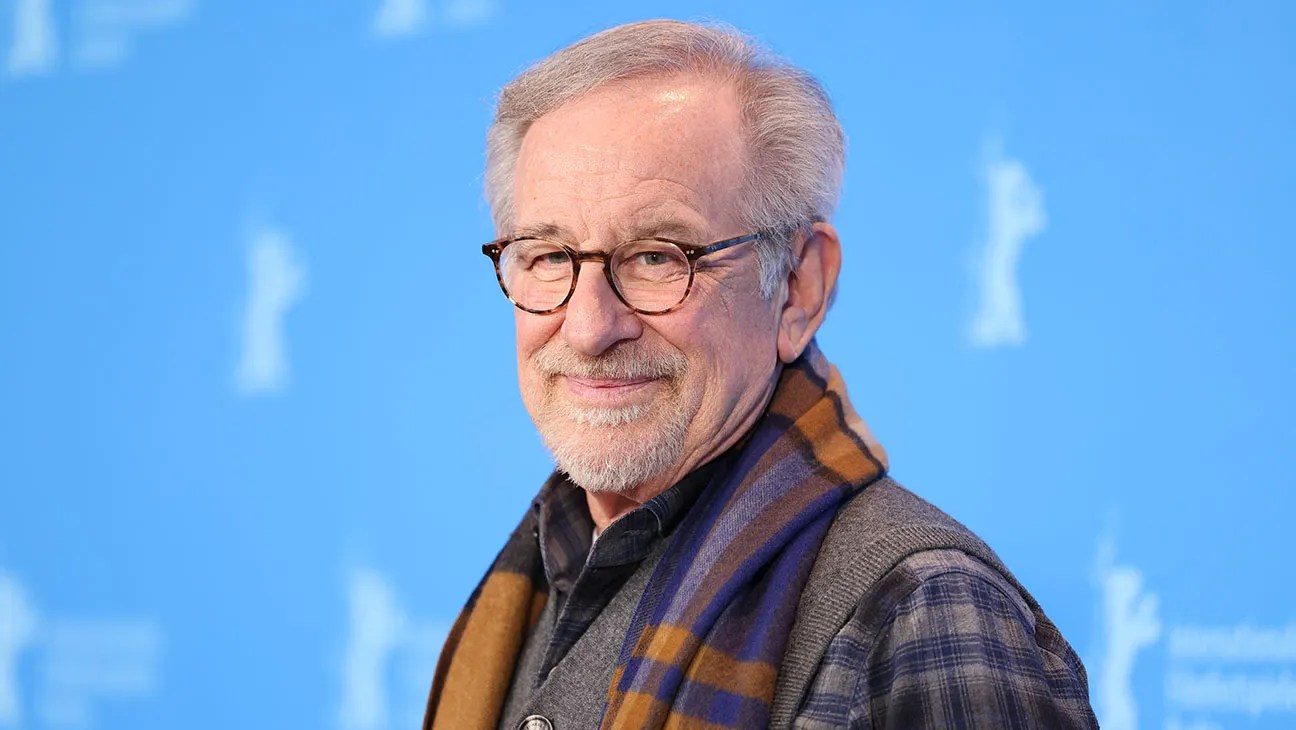This discussion and review contains some spoilers for Star Trek: Picard season 2, episode 5, “Fly Me to the Moon.”
“Fly Me to the Moon” at least represents a substantive improvement from “Watcher,” and not just because it takes the Chekov’s gun established in “Watcher” off the mantelpiece.
To be fair, there are still some of the familiar problems that haunt both seasons of Star Trek: Picard. There is a certain looseness to the scripting. In particular, a key set piece hinges on the idea that the French police force would send a single officer to investigate an emergency call from a remote location. It feels very much like a dramatic contrivance designed to facilitate the confrontation between Jurati (Alison Pill) and the Borg Queen (Annie Wersching), but it also feels sloppy.
In a broader sense, “Fly Me to the Moon” finds Star Trek: Picard season 2 leaning hard into the “great man” theory of history, embracing a sort of rugged individualism that feels at odds with the more communal ideals of Star Trek. For example, many of the franchise’s earlier time travel stories often hinged on the idea that key historical figures were just ordinary people who happened to be in the right place at the right time.
In “Past Tense” in Star Trek: Deep Space Nine, Sisko (Avery Brooks) is able to step into the role of a historically important figure named Gabriel Bell, after the real Bell (John Lendale Bennett) is killed in a freak accident. In The Voyage Home, Scotty (James Doohan) provides a random stranger with the formula for transparent aluminum, on the logic that he might as well be the inventor of it. In First Contact, the Enterprise crew discovers that warp drive inventor Zefram Cochrane (James Cromwell) is a sleazy hustler.

In contrast, “Fly Me to the Moon” plays its great man theory of history entirely straight, resting the entire future of the Star Trek universe on Renée Picard (Penelope Mitchell). Tallinn (Orla Brady) talks about her role protecting “a single string in a grand tapestry.” Rios (Santiago Cabrera) sums up the episode’s stakes when he asks, “You’re saying this great aunt of yours is singlehandedly responsible for preventing this future of ours from becoming a xenophobic tyranny?”
Indeed, this weirdly insistent individualism extends beyond the way that “Fly Me to the Moon” approaches history. The Borg Queen is focused on Jurati to the point of obsession. After all, for all that the character has been talking about feeling lonely or isolated, she has the local police officer dead to rights. She could easily assimilate him. The Borg Queen acknowledges as much when Jurati shows up. “I could take his body, but it’s you I want,” she boasts.
That said, there are other ways in which “Fly Me to the Moon” feels like a much more traditional sort of Star Trek story. The episode returns to the franchise’s recurring fascination with, and fear of, transhumanism. The show has been wary of genetic engineering and eugenics since “Space Seed” during the 1960s, and the theme has bubbled through decades of Star Trek, including stories like “Doctor Bashir, I Presume,” “Statistical Probabilities,” and the “Augments” trilogy.
“Fly Me to the Moon” feels very much of a piece with these sorts of stories. As with the “Augments” trilogy, Brent Spiner returns as an ancestor of Noonien Soong obsessed with genetic engineering rather than cybernetics. When Q (John de Lancie) greets Adam Soong (Spiner), he references the same (possibly apocryphal) greeting that inspired the title of “Doctor Bashir, I Presume.” It is a nice piece of internal continuity, framing this thread in the larger context of Star Trek canon.

On a purely conceptual level, Star Trek: Picard season 2 marks the first point of intersection of two of the franchise’s long-standing fears about transhumanism: the genetic engineering proposed by people like the Soong family, and the cybernetic augmentation championed by the Borg Collective. It is interesting to wonder how these two threads might overlap with one another or if they will branch off in their various directions.
To give “Fly Me to the Moon” some credit, these overlapping thematic threads offer a welcome semblance of nuance to the plot hook suggested by “Watcher.” Towards the end of “Watcher,” it was suggested that the future of mankind depended entirely on the resumption of spaceflight. That worldview fits with the franchise’s occasional tendency towards technological determinism — the idea that technology is inherently good and that technological advances are universally beneficial.
In the universe of Star Trek, it can often seem like advances like the replicator or warp drive (or even the holodeck) are the cornerstones of the utopia that the characters inhabit. This ignores the sort of radical social changes that would be necessary to realize the utopian future of the Star Trek universe, and it seems like “Watcher” implies that rampant xenophobia or massive income inequality doesn’t matter so long as mankind journeys into space.
“Fly Me to the Moon” examines this a bit more by juxtaposing various fields of technological advancement and the understanding that not all technological advances are for the greater good. “I am death, destroyer of worlds,” Q boasts before providing Soong with the breakthrough that he needs, a line of dialogue that evokes the (often paraphrased) quote attributed to Robert Oppenheimer on witnessing the detonation of the atomic bomb.

There is a certain abstract and loose quality to the modern era of Star Trek, particularly Discovery and Picard. Characters and plot points tend to exist at a level of abstraction and metaphor that wasn’t historically the case in the Berman era, particularly in The Next Generation or Voyager.
“Fly Me to the Moon” leans into this in a way that helps smooth over some of the larger contrivances of this season’s time travel plot. After all, it seems a massive coincidence that the entire plot hinges on Jean-Luc Picard (Patrick Stewart) confronting his great-aunt Renée while also working through some unresolved issues with his mother, Yvette (Herta Ware). This is kind of fuzzy plot logic that only barely hangs together, even with the involvement of a godlike character like Q.
Similarly, it might seem absurd that the characters are thrown back in time several centuries only to encounter variants on familiar characters. Orla Brady plays Laris in the 25th century and Tallinn in the 21st. Isa Briones played Dahj and Soji Asha in the show’s future and Cory in the show’s past. Brent Spiner played Data and Altan Soong in the first season and now Adam Soong in the second. This all makes Picard seem like a small and incestuous universe.
However, there is some sense of thematic logic at play here. The first season of Picard was obsessed with the idea of twins and siblings: Dahj and Soji, Data and Altan, Narek (Harry Treadway) and Narissa (Peyton List). It makes sense that this theme of mirroring and twinning would echo backwards in time, that Adam Soong’s daughter Cory would feel like a mirror to Data’s daughter Soji.

After all, the Star Trek franchise has always used its setting to provide metaphors and allegories for recognizable situations. It has always been more about the present than the future. These casting choices feel like a logical escalation of this trend, suggesting that characters themselves can be subject to the same level of abstraction or adaptation. Q casts himself as a therapist to Renée, in what is just a more literal version of the role he played to Jean-Luc in “Tapestry.” It still feels somewhat contrived, but at least it makes some sense within the internal world of Star Trek: Picard.
There is a question about the extent to which these similarities are objective or subjective, whether the characters (and implicitly the audience) are invited to compare these characters separated across time rather than treating the similarities in a more literal way. After all, Raffi (Michelle Hurd) is explicitly haunted by visions of Elnor (Evan Evagora) that are promptly revealed not to be there. Raffi sees Elnor in a young man she saves. Why wouldn’t the audience see Soji in Soong’s daughter?
This ties back neatly into the season’s big theme, the question of what it means to manifest a better future and whether that future is just one of an infinite array of possibilities. As with earlier episodes in the season, there’s a creeping sense of nihilism and futility. “I feel like nothing matters,” confesses Renée, articulating a feeling that many viewers can relate to. Q challenges Soong, “The only way to truly be free is to love nothing. And how meaningless would that be?”
The second season of Star Trek: Picard seems to be positioning itself as a show about the importance of believing in the best possible future. While “Fly Me to the Moon” is decidedly imperfect, it does represent a significant step in the journey of Star Trek: Picard to be the best version of itself.






Published: Mar 31, 2022 01:32 pm